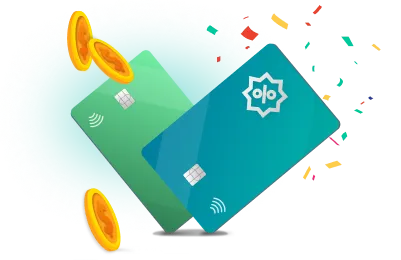Best low interest credit cards of 2024
Save money on purchases or balance transfers with a low interest card. Get matched to credit cards from our partners based on your unique credit profile.

Save money on interest
If you carry a balance on your credit cards, these low rate could help you save.
Transfer your balance
Move your existing credit card debt to a low interest card to pay off debt faster.
Pay off large purchases over time
Save money with lower interest payments on purchases you need time to pay off.
Browse categories
All low interest credit cards
11 partner offers
Wells Fargo Autograph℠ Card
Intro bonus: | Earn 20,000 bonus points when you spend $1,000 in purchases in the first 3 months - that's a $200 cash redemption value. |
|---|---|
Rewards: | 1x-3x (Points per dollar) |
Ongoing APR: | 20.24%, 25.24%, or 29.99% Variable APR |
Annual Fee: | $0 |
Citi Simplicity® Card
Intro APR: | 0% for 21 months on balance transfers and 12 months on purchases |
|---|---|
Ongoing APR: | 19.24% - 29.99% (Variable) |
Rewards: | N/A* |
Annual Fee: | $0 |
Capital One VentureOne Rewards Credit Card
Intro APR: | 0% on Purchases and Balance Transfers for 15 months |
|---|---|
Ongoing APR: | 19.99% - 29.99% (Variable) |
Rewards: | 1.25x-5x (Miles per dollar) |
Annual Fee: | $0 |
Citi Rewards+® Card
Intro APR: | 0% for 15 months on Purchases and Balance Transfers |
|---|---|
Ongoing APR: | 18.74% - 28.74% (Variable) |
Rewards: | 1x-2x (Points per dollar) |
Annual Fee: | $0 |
Citi® Diamond Preferred® Card
Intro APR: | 0% for 21 months on Balance Transfers and 12 months on Purchases |
|---|---|
Ongoing APR: | 18.24% - 28.99% (Variable) |
Rewards: | N/A* |
Annual Fee: | $0 |
Capital One Quicksilver Cash Rewards Credit Card
Intro APR: | 0% on Purchases and Balance Transfers for 15 months |
|---|---|
Ongoing APR: | 19.99% - 29.99% (Variable) |
Rewards: | 1.5%-5% (cash back) |
Annual Fee: | $0 |
Capital One SavorOne Cash Rewards Credit Card
Intro APR: | 0% on Purchases and Balance Transfers for 15 months |
|---|---|
Ongoing APR: | 19.99% - 29.99% (Variable) |
Rewards: | 1%-8% (cash back) |
Annual Fee: | $0 |
Wells Fargo Active Cash® Card
Intro APR: | 0% intro APR for 15 months from account opening on purchases and qualifying balance transfers |
|---|---|
Ongoing APR: | 20.24%, 25.24%, or 29.99% Variable APR |
Rewards: | 2% (Cash Rewards) |
Annual Fee: | $0 |
Platinum Prestige Mastercard® Secured Credit Card
Intro bonus: | N/A* |
|---|---|
Rewards: | 1% (cash back) |
Ongoing APR: | 15.24% Variable |
Annual Fee: | $49 |
Wells Fargo Reflect® Card
Intro APR: | 0% intro APR for 21 months from account opening on purchases and qualifying balance transfers |
|---|---|
Ongoing APR: | 18.24%, 24.74%, or 29.99% Variable APR |
Rewards: | N/A* |
Annual Fee: | $0 |
Citi Custom Cash® Card
Intro APR: | 0% for 15 months on Purchases and Balance Transfers |
|---|---|
Ongoing APR: | 19.24% - 29.24% (Variable) |
Rewards: | 1%-5% (cash back) |
Annual Fee: | $0 |
Advertiser Disclosure: The offers that appear on this site are from third party companies ("our partners") from which Experian Consumer Services receives compensation. This compensation may impact how, where, and in what order the products appear on this site. The offers on the site do not represent all available financial services, companies, or products.
Credit scores are used to represent the creditworthiness of a person and may be one indicator to the credit type you are eligible for. However, credit score alone does not guarantee or imply approval for any offer.
*For complete information, see the offer terms and conditions on the issuer or partner's website. Once you click apply you will be directed to the issuer or partner's website where you may review the terms and conditions of the offer before applying. We show a summary, not the full legal terms – and before applying you should understand the full terms of the offer as stated by the issuer or partner itself. While Experian Consumer Services uses reasonable efforts to present the most accurate information, all offer information is presented without warranty.
Experian websites have been designed to support modern, up-to-date internet browsers. Experian does not support Internet Explorer. If you are currently using a non-supported browser your experience may not be optimal, you may experience rendering issues, and you may be exposed to potential security risks. It is recommended that you upgrade to the most recent browser version.
Any opinions, analyses, reviews, or recommendations expressed on this page are those of the author’s alone, and have not been reviewed, approved or otherwise endorsed by the issuer.
How to find the best low interest credit card
1
Determine your needs
Pick a low interest card that fits your financial needs.
2
Compare APRs
Look for a low APR but also look at other charges and fees.
3
Consider annual fees
Make sure you’ll save more in interest than you’ll pay in fees.
4
Check balance transfer fees
Find out if the fee is less than you’ll save on interest.
Start with your FICO® ScoreΘ and see card offers matched to your credit profile.
Get started for freeΘCredit score calculated based on FICO® Score 8 model. Your lender or insurer may use a different FICO® Score than FICO® Score 8, or another type of credit score altogether. Learn more.










